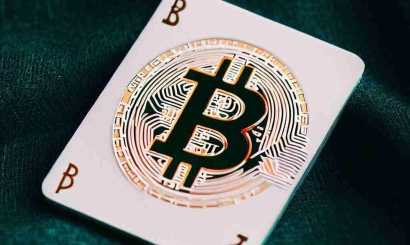Million Dollar Sandwich. How crypto traders make money on other people's trades
Here's how trading bots earn their creators millions of dollars by tracking profitable blockchain trades
An anonymous trader, who owns an Ethereum wallet with the address jaredfromsubway.eth, became a star in the cryptocurrency community in one day: due to tactics of a so-called sandwich attack he earned over $4 million in just 24 hours and hit the leaders by the size of network commissions, displacing the largest crypto services.
Such attacks are not a new concept in decentralized finance (DeFi). The sandwich metaphor is used because a trader's tactics are based on two-way use of information about someone else's bid to buy a particular crypto asset. Using special bots, the trader tracks transfers in the pool of unconfirmed Ethereum or other blockchain transactions.
When a bot finds a large order that will inevitably increase the price of an asset, it buys the asset in advance at a lower rate, "pushing" its transaction at the expense of an increased commission, and when the order is executed and the price rises, it sells it at a profit.
Memes and commissions
The most attractive target for such attacks is usually transactions in low-liquid assets. That's exactly what PEPE, a new token named after the famous meme with the frog Pepe, has become. PEPE quickly gained popularity when a story broke in the community about how a certain early buyer of the token turned $250 into $1.8 million at a thousand-fold increase in its price.
In search of quick profits, thousands of other traders began buying up PEPE, and similar tokens named after famous memes - CHAD, WOJAK, and others - began launching in parallel. Due to the low liquidity of the tokens, any large purchase order pushed their prices up, and it was such bids that were hunted by the bots of traders earning on sandwich attacks.
Rates of new meme tokens rose hundreds of percent after the launch
According to analytics service EigenPhi, PEPE, and WOJAK have become the most popular assets on the Ethereum network in the past week after the USDC and USDT stack coins with transaction volumes of over $250 million and $120 million, respectively. The wallet owner jaredfromsubway.eth had about $1.6 million in revenues from sandwich attacks in pairs with PEPE and more than $2.8 million in transactions with WOJAK.
However, the implementation of this strategy in such volumes requires high costs to pay higher commissions to "push through" transactions. The owner of jaredfromsubway.eth spent about $1.3 million on so-called gas on the Ethereum network in just one day. That's about 1.8% of the network's total commissions over the same period. At the moment, the trader was outpaced only by the Arbitrum network's contract, which has an entire ecosystem of applications with millions of users.
Community observers estimate that jaredfromsubway.eth has spent about $7 million in commissions on more than 180,000 transactions over the past two months, seeking to profit ahead of other users' transactions.
Unethical tactics.
Sandwich attacks are just one tactic within the larger phenomenon of Maximal Extractable Value (MEV). It is a technique that manipulates the sequence of transactions in the blockchain to generate profits, for example by arbitrating or outbidding other people's transactions. The profits from MEV usually go to the creators of transaction blocks on the Ethereum network. They are the ones who determine the order of these transactions and then pass it on to validators. Ordinary users cannot influence their own transactions, and wallets and applications do not have the necessary tools to use MEV to their advantage.
It takes the Ethereum blockchain about 12 seconds to validate a single block of transactions. Bots have enough time to scan each of the unvalidated transactions in a block and get ahead of the time to close someone else's transaction. The process whereby the bot puts its own transaction before someone else's (which will cause the price of the asset to rise) is called frontrunning. Repositioning a transaction with a bid to sell an asset already at a higher price is called back running. The combination of both processes creates a sandwich attack.
Traditionally, such tactics are considered unethical, but not prohibited. The lack of a central supervisory body for DeFi plays into the hands of MEV traders. Most of their transactions take place on decentralized exchanges (e.g., Uniswap), as was the case with the wallet owner jaredfromsubway.eth. In the same way that high-frequency trading players lead the way in profits in traditional markets, crypto traders in the MEV segment are making billions of dollars in crypto-assets revenue using a variety of tactics.
Flashbots has been fighting for a fair market in the MEV field for years, creating software and infrastructure to reduce manipulation in this area. On April 20, the developers unveiled a beta version of their MEV-Share protocol, which aims to distribute a portion of the profit from maximum recoverable value to Ethereum users. According to the developers, it will give users control over their transactions, and it can be integrated into wallets to protect against bots trying to extract profits through frontrunning.
- Analysts call the collapse of FTX the catalyst for a new bullish cycle of cryptocurrencies
- "Your Own Bank. When cryptocurrencies will be available to everyone
- Ethereum's stacking value fell by $1.3 billion after the Shapella fork
- Ethereum's rise in price has brought a newcomer to the top 10 cryptocurrencies
- The Future of Cryptocurrencies: What are the Benefits of Decentralized Finance
- SEC warned of a possible lawsuit by cryptocurrency exchange Bittrex
- Blockchain project Chia applied to the SEC for an IPO




_410x245_00e.webp)


